California Condor (Gymnogyps californianus) is the state animal of California. It’s an endangered California condor because it faces many challenges, such as habitat loss and lead poisoning from eating animals killed with lead bullets. The population in CA is around 400, so people are working day and night to keep the population growing!
- Status: Critically endangered
- Known as: California Condor.
- Estimated numbers left in the wild: 226.
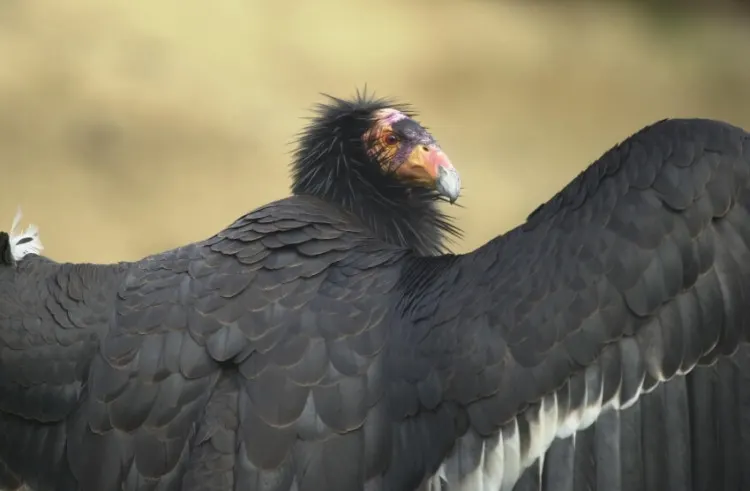
California is fighting hard to protect these bird species, including banning lead fishing tackle, shooting guns in hunting areas, and establishing large protected areas in California for this species to fly free in.
Description
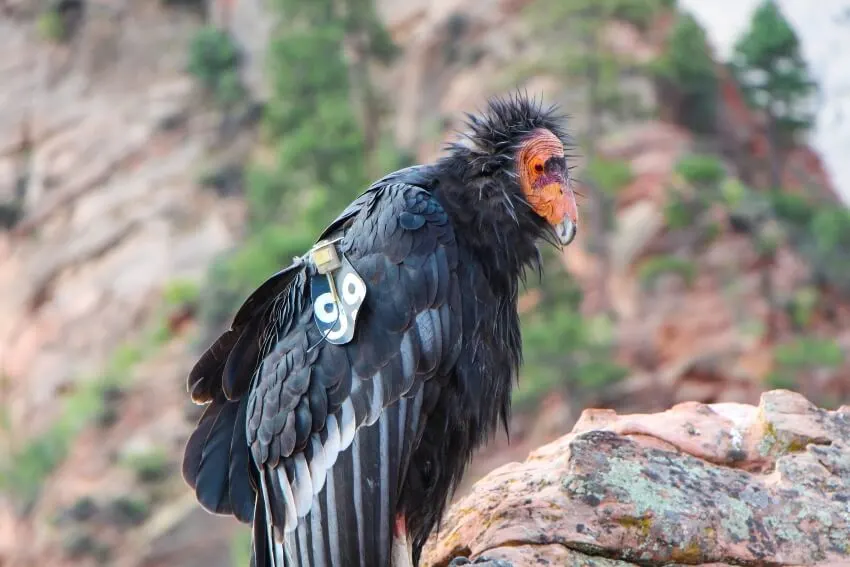
California condors are the state bird of California and among the largest land bird in North America. They are endangered due to habitat destruction. There are around 400 of its species in California.
It is a huge vulture; this condor is 1.1 to 1.4 meters long, with a wingspan of up to 3 meters. They have been spotted soaring high above California. These North American birds flap their large wings very slowly and rock from side to side as they fly. Some California Condors migrate, but many California Condors stay in California year-round.
Anatomy and Appearance
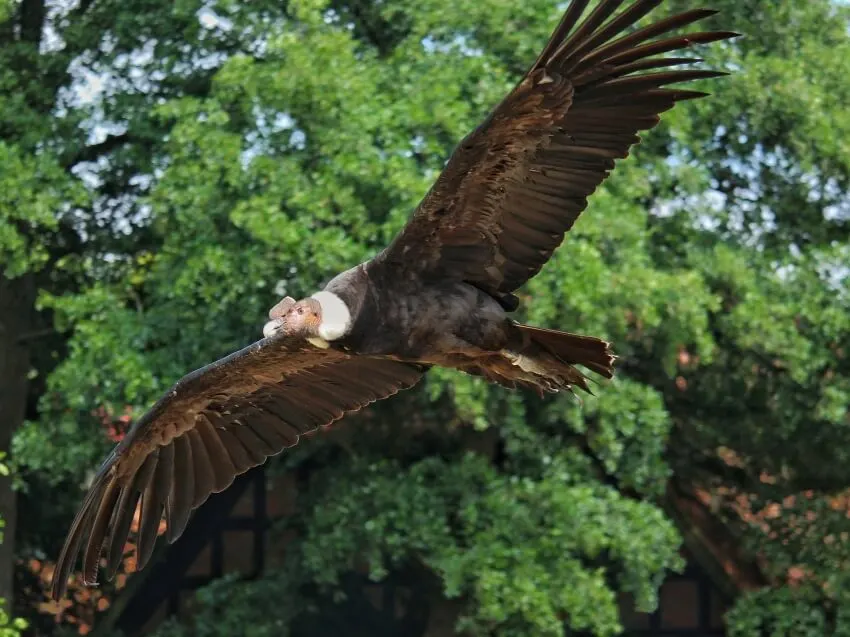
These species are very big birds with a wingspan of 10 feet and larger than a bald eagle. They have a black head and neck with white patches of feathers on their faces and underbelly. California condors’ color is leathery, and different colors range from dark brown to light tan. These species are large but can live up to 60 years- some birds even live to 100!
It has funereal black feathers covering a body weighing 8 to 14 kilograms. Their bare heads and necks are pink or yellow, sometimes almost orange.
They are powerful fliers that can ascend as high as 4,600 meters and have a maximum flying speed of around 90 kilometers per hour. Nevertheless, they usually fly more slowly and prefer to soar on thermals to conserve energy.
See Related: Forest Owlet
Location

These species are found only on the West Coast of the United States but have been reintroduced in Mexico. Most are found in California, Southern Utah, and Northern Arizona.
The condor prefers oak savannah, coniferous forest, and rocky scrubland and is almost always found at sites where either cliffs or large trees are available for nesting.
Habitat
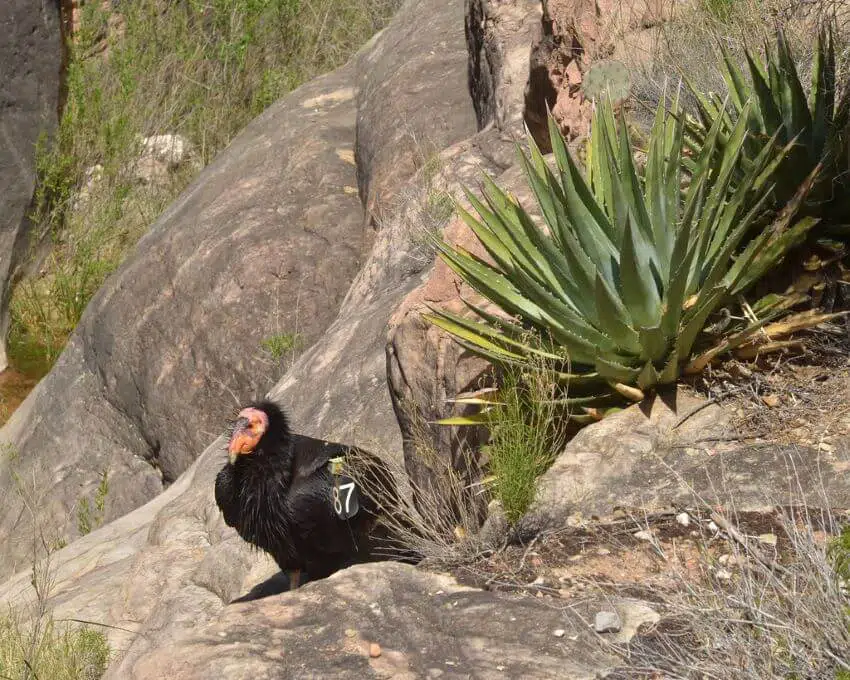
These bird species can be found in Baja California, Southern California, and across California’s mountains, valleys, and the Grand Canyon. They can also be found mostly in national wildlife refuges. California is home to one of the world’s most endangered animals, California Condors or the Gymnogyps californianus. Condor Habitat is on rocky cliffs or boulder piles, usually surrounded by open areas.
They feed on carrion (dead animals) at any time of day or night. They can swoop quickly to snatch food off the ground, but condors often use their feet to access food hidden under boulders.
Diet and Nutrition

California condors are meat-eaters, predatory animals like turkey vultures who obtain almost all their nutrition from carrion. Lacking a sense of smell, they zero in on corpses by observing other scavenger birds.
Larger corpses, such as deer, cattle, sheep, cougars, and bears, are favored over smaller ones, but hunger often forces the condor to accept the remains of jackrabbits, coyotes, and even salmon.
Condors chase other scavengers away from a body, though they cannot intimidate bears or bald eagles. Bald eagles will attack a condor that attempts to take a corpse from them.
California Condors eat soil, plants, snakes, and even insects when there isn’t enough food. The birds’ stomachs cannot metabolize lead, which exists in many animals killed with lead ammunition, such as deer shot with bullets or coyotes lain.
Overusing poison bait traps, newer types of bullets called “green bullets” can replace these toxic types of ammunition. Still, California is the only state outlawing hunting with lead bullets, and California is working toward a complete ban on lead ammunition.
See Related: Amsterdam Albatross
Mating Habits
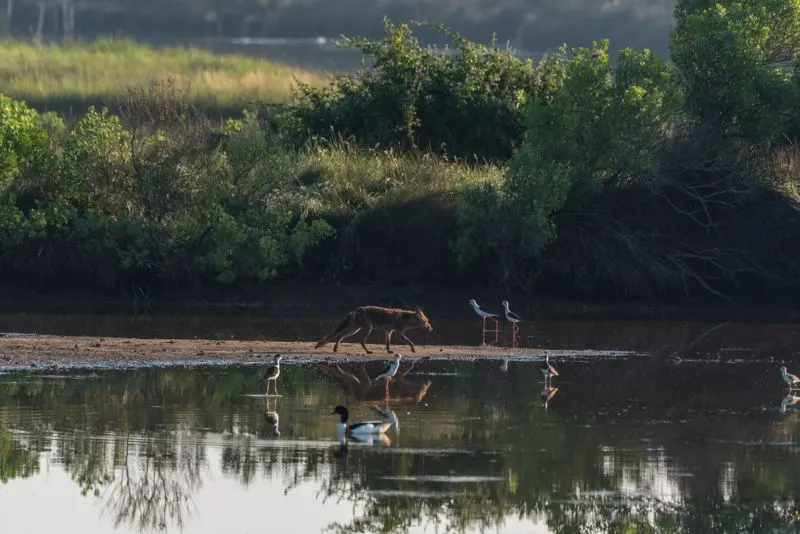
Adult Condors mate in large groups, primarily one male and many female California Condors. The females will then lay their eggs in the same nest. Since baby condors are so important to the wild condor population, there is a limited number of California chicks each year.
Adult Condors are long-lived, with 60 years being an average wild lifespan if the bird is not shot or poisoned first. Their reproduction is correspondingly slow – the bird does not reach sexual maturity until the age of 6.
Chicks take around two months to hatch, and only one egg is laid at a time, at intervals of two years. They can fly in six months, though they usually stay with their parents until the next egg is laid.
California Condor Eggs

Their eggs are being incubated at the San Diego Zoo Safari Park. The eggs were removed from a wild condor nest in Ventura County and brought to the zoo for safekeeping.
The eggs will be incubated for up to 42 days. Once they hatch, the condor chicks will be cared for at a zoo like the Los Angeles Zoo and Santa Barbara Zoo until they are ready to be released back the captive-bred condors into the wild.
Role in the Ecosystems

A California Condor’s diet comprises medium-sized mammals, which are very important to California’s ecosystem. California Condors are important because they control the population of prey like coyotes, badgers, foxes, and bobcats.
This ecological role is called ‘predation.’ It ensures that prey species populations don’t get too large to hurt the environment. That’s why it’s so important for there to be enough California Condors flying free in California.
Relationship with Humans

Not surprisingly, California Condor and humans have a long intertwined history. California had California Condors for over 10,000 years before the Europeans arrived in California. It owes its name to California; this state has protected California Condors.
California is the only place you find these large mammals, and if California’s human inhabitants want to keep condors around, they need to do what they can.
The main threats facing these animals were lead poisoning from eating animals with lead bullets, habitat loss, poaching, disturbance at feeding sites, and collisions with power lines.
More regulations have been put in place to protect them from some of these threats, such as a ban on lead fishing tackle in some areas and more California condors living in large protected areas. California’s condor wild population is still endangered, and California is fighting hard to protect these species.
California Condor Facts

Here are the interesting facts about the carnivorous bird species:
- These animal species are California’s state animal
- The only place you can see condors is in California.
- There are an estimated 400 remaining wild condors.
- These species confront several hazards. California Condors are particularly vulnerable, including habitat destruction and lead poisoning from eating animals shot with lead bullets.
See Related: Andean Flamingo
Why are California condors important?
California condors are important because they are critically endangered species that play a vital role in maintaining the ecological balance of their habitat. As scavengers, they help clean up dead animal carcasses, which helps prevent the spread of disease and supports the growth of vegetation. Additionally, their cultural and spiritual significance to indigenous communities underscores the importance of preserving their existence for future generations.
Conservation Status
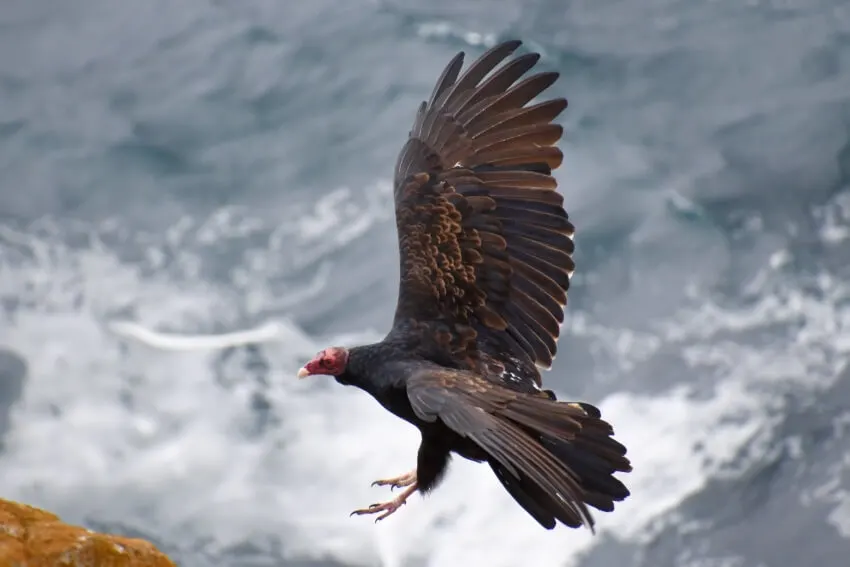
California is the only state where the condor can be found, and it is its official animal. It numbers around 400 birds in California. They’re on the verge of extinction because they have many problems, such as habitat loss and lead poisoning from eating animals shot with lead bullets.
The low point of the condor population was 22 birds – today, there are ten times as many in the wild and nearly as many living in captivity.
See Related: Most Interesting Birds in the World
Threats
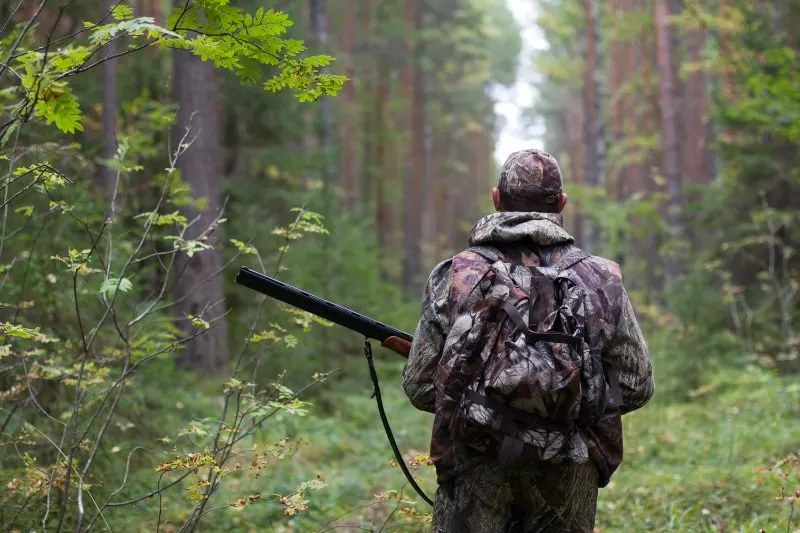
Many factors have contributed to the perilous state of the condor today, most of them coming directly from humans. Humans have shot and persecuted these large mammals for decades, often propelled by appalling ignorance – ranchers, seeing the birds feeding on dead cattle, believed that the condors somehow killed their animals rather than being scavengers.
However, the condor was already quite rare when Europeans arrived, perhaps due to the lack of Pleistocene megafauna to provide an abundant food source.
Though shooting has declined (sadly, it has not disappeared since some people still believe that condor kills sheep and cattle), lead poisoning has become the primary threat to the species.
Hunters shoot animals with lead bullets or shot; when the condors eat the carcasses, they also eat the lead and eventually die since the metal builds up to lethal levels during their long lifespan. DDT poisoning, habitat destruction, and collisions with power lines are also dangers.
What is one of the causes of condors being endangered?

One of the causes of condors being endangered is habitat loss due to human activity. Like many other animals, condors require specific habitats to survive and thrive. Unfortunately, human activities such as deforestation, urbanization, and development have destroyed or altered much of their natural habitats. This has resulted in a significant loss of suitable nesting and feeding areas for condors, contributing to their decline in population numbers.
See Related: Endangered Species in Florida
Conservation efforts

Various zoos and parks and the United States Fish and Wildlife Service have made massive efforts to restore the condor, which have been somewhat successful. The low point of the condor population was 22 birds – today, there are ten times as many in the wild and nearly as many living in captivity.
The reintroduction of condors, the California condor recovery plan, and efforts to replace lead bullets with safer ammunition are important ongoing conservation methods.
Endangered species act
The Endangered Species Act of 1973 (ESA) is a federal law in the United States that protects endangered and threatened species of plants and animals from extinction. The ESA is one of the most powerful wildlife protection laws in the world.
The ESA prohibits anyone from harming, harassing, capturing, killing, or selling any protected species. It also requires the government to protect their habitat. The act also protects condors, a critically endangered species that needs protection.
See Related: Conservation vs. Preservation
Organizations

World Wildlife Fund
The World Wildlife Fund is a global organization that aims to protect endangered animals and their habitats. Organizations like the World Wildlife Fund are also important because they work in over 100 countries and have been around for over 50 years for wildlife conservation. They work in over 100 countries and have been around for over 50 years. Some of the work they do includes:
- Conserving wildlife and their habitats
- Promoting sustainable use of natural resources
- Addressing climate change
- Providing education and training
U.S. Fish and Wildlife Service
The U.S. Fish and Wildlife Service has played a big role in helping conserve California Condors and golden eagles by registering them as endangered under the Endangered Species Act of 1973.
In 1981, they signed an agreement with three prison inmates from California—John Worthy, Richard Stroud, and Joseph Rose—where these condor species would be taken care of in captivity. This program with the U.S. Fish and Wildlife Service is called the California Condor Recovery Program, which has successfully raised condors.
The Peregrine Fund
The Peregrine Fund aims to establish self-sustaining wild condor populations of California Condors through a captive breeding program and release them back into the wild. The Peregrine Fund is a nonprofit organization that was founded in 1970. The organization’s goal is to conserve birds of prey worldwide.
The Peregrine Fund has had a lot of success in its work, including captive breeding programs for these condors in captivity and releasing them back into the wild. The Peregrine Fund also works to protect birds from threats such as poaching, climate change, and habitat loss.
California Condor is California’s state animal, and California is the only place you can find them. They are critically endangered because they face many challenges, such as habitat loss and lead poisoning from eating animals killed with lead bullets.
California has a population of around 400 California Condors, so it is important to protect them if we want this species to survive in Southern California and throughout California!
Organizations like the World Wildlife Fund work in over 100 countries for wildlife conservation – including protecting these condors by working on issues threatening their survival, such as poaching or pollution, and organizations like The Peregrine Fund.
FAQ
What is California Condor?
California Condor is California’s state animal, and California is the only place you can find them!
Is the California condor extinct?
They are endangered and extinct in much of their former range. It became extinct in the wild in 1987, but now there are nearly 500 individuals living both in captivity and the wild.
Time will tell if this might be one success story, as bird populations often rebuild themselves from such low numbers or an ongoing endeavor to ensure that habitats are secure enough for this bird to thrive.
What are some threats to California condors?
California condors are threatened with two main challenges: habitat loss and lead poisoning. California is the only state they make their home, and most of California’s wildlands have been lost to development and agricultural practices.
California has protected many condor habitats by creating wildlife preserves like Pinnacles National Monument, but they need our protection to keep these places free from encroachment for future generations.
Efforts to protect California Condors and maintain California’s condor population include: banning lead fishing tackle, shooting guns in hunting areas, and establishing large protected areas for these bird species to live free in.
What organizations work on the conservation of California Condor?
There are many organizations working on these species conservation. The California Condor Recovery Program, the Peregrine Fund, the Ventana Wildlife Society, and International Fund for Animal Welfare are just a few of the institutions that work to conserve condors.
Why did Europeans shoot at California Condors when they first arrived in California?
European settlers first came to California in 1769. These species were roosted on Church steeples and craggy peaks where air currents prevented insects from settling, making them easy targets for European settlers who erroneously perceived California Condors as threats.
What is the current population of California Condors?
California has around 400 California Condors. California is fighting hard to protect this beautiful species, including banning lead fishing tackle, shooting guns in hunting areas, and establishing large protected areas in California for these Condors to fly free in!
Other Species Profiles
Related Resources
